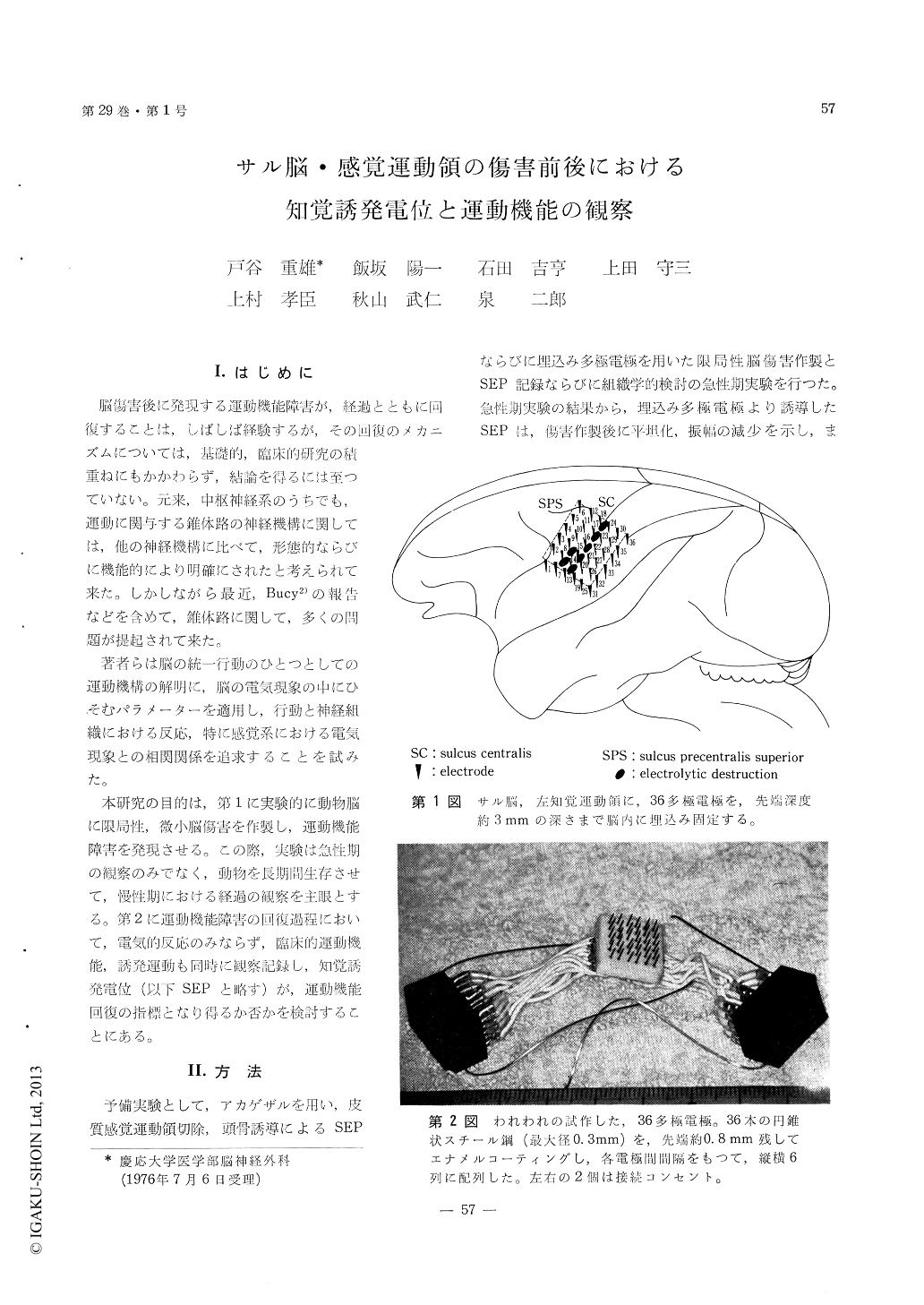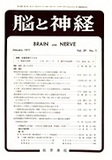Japanese
English
- 有料閲覧
- Abstract 文献概要
- 1ページ目 Look Inside
I.はじめに
脳傷害後に発現する運動機能障督が,経過とともに回復することは,しばしば経験するが,その回復のメカニズムについては,基礎的,臨床的研究の積重ねにもかかわらず,結論を得るには至つていない。元来,中枢神経系のうちでも,運動に関与する錐体路の神経機構に関しては,他の神経機構に比べて,形態的ならびに機能的により明確にされたと考えられて来た。しかしながら最近,Bucy2)の報告などを含めて,錐体路に関して,多くの問題が提起されて来た.
著者らは脳の統一行動のひとつとしての運動機構の解明に,脳の電気現象の中にひそむパラメーターを適用し,行動と神経組織における反応,特に感覚系における電気現象との相関関係を追求することを試みた。
Although a considerable number of papers have appeared in the past, little is known about the mechanism of recovery following motor cortical damage. The purpose of this paper is to clarify the mechanism of recovery of motor function after making small lesions which are small in comparison with these studied earlier. Furthermore, an attempt was made to elucidate the relationship between sensory evoked potentials (SEP) and motor control.
The animals used in this study were macaca mulatta weighing 2.8-3.8 kg. Left frontoparietal craniotomy was performed under ketamin anesthesia (5 mg/kg) using sterile surgical technique. The left motor cortex was exposed and the hand area identi-fied by electronic stimulation. Each of the monkeys were prepared with an array of 36 electrodes 2 × 2 mm apart, covering an area of 15 × 15 mm, centered on left central sulcus. Then electrolytic lesion were made with current through some electrodes which were implanted just at the hand area.
Measurements of SEP, evoked movement by cortical stimulation with current and skilled motor function were taken from a monkey with arrays of 36 electrodes chronically implanted in left sen-sorimotor area. Three measurements mentioned above were carried out on following schedule : before lesion, 1・2・4 and 5 days, 1・2・3 weeks afterlesion.
Small lesion in the cortical hand area produced contralateral hand paralysis and inability to perform a motor act such as food retrieval. This paralysis was followed by a considerable degree of recovery and return of motor skill after three weeks follow-ing cortical damage.
Recovery of the evoked movement paralleled the change in the motor function or the behavioral measurements. SEP records conducted from electrodes of destructed parts showed initially marked decrease of amplitude. Then they were followed by a gradual recovery and a return to original pattern after three weeks. Other SEP records which were conducted from electrodes of unaffected parts remained constant throughout the experiment. It is of considerable significance that the change of SEP paralleled with changes in the evoked movement and the behavioral measurement.
Final conclusion about the mechanism of recovery of motor function can not be drawn from the results of this paper. It is, however, suggested that the recovery of motor function is attributed to recuperation of the original function of cortical tissue adjacent to the destructed parts in the sen-sorimotor area.

Copyright © 1977, Igaku-Shoin Ltd. All rights reserved.


